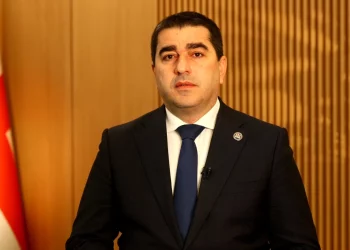I want to share my experience from October 10 at the Eco Centre in Rustavi, where I participated in an important training session focused on environmental issues as part of the project ‘Accelerating Eco-friendly Development: Raising Awareness and Promoting Sustainable Waste Management.’
A group of us teens, from Tbilisi and Rustavi, came together to learn about air quality, plastic pollution, and how to live more sustainably. The session included educational games that helped us understand the topics in a fun way, and we also had discussions about our individual roles in creating a healthier environment.
Let’s take a closer look at what we learned and how we can all contribute to a greener future.
What Did We Learn?
Our main topics were air quality, plastic pollution, and how we can all live in a more eco-friendly way.
One of the things we talked about was airborne particulate matter (PM). PM isn’t just one type of pollutant; it’s actually a mix of tiny particles in the air, some of which can be harmful to our health. There are two main types we learned about:
• PM10: These particles are 10 microns or less and can get into our lungs. They can come from things like construction sites, wildfires, and dust.
• PM2.5: These are even smaller (2.5 microns or less) and are mostly produced by burning fuels like gas, oil and wood. Because they are so tiny, they can penetrate deeper into our lungs and cause more health issues.
Understanding the difference between PM10 and PM2.5 helps us see why keeping our air clean is super important, and by looking at the Rustavi case, we got to put that into perspective.
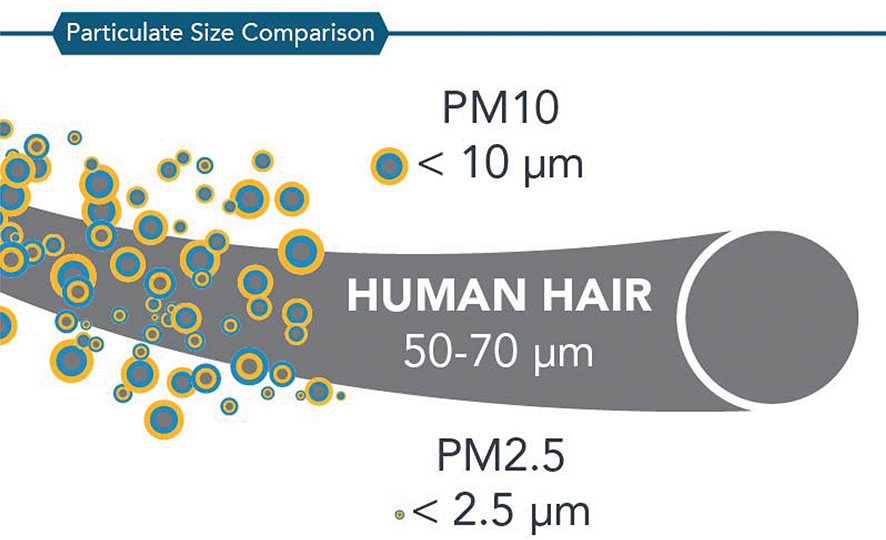
Rustavi is one of the most polluted cities in Georgia, with 400 hectares of industrial zone, where factories regularly release pollutants without proper air filtering systems, impacting thousands of residents.
With support from the USAID Civil Society Engagement Program, the activist groups Gavigudet (We Are Suffocating) and Eco Centre monitored the Rustavi industrial zone and analyzed air quality, together with Rustavi residents. They came up with 65 reports containing photo and video evidence of the breaking of air pollution rules. Today, thanks to their work, 13 out of 15 factories have now installed air filters and self-monitoring systems, and the ‘2023-2025 Air Quality Management Plan for the Central Zone,’ was approved by the government in August 2023.

The Ministry of Environmental Protection says air pollution in Rustavi has decreased by 40% since 2019, but the work isn’t over, and we all need to work together to keep raising awareness and making changes to improve air quality in the city.
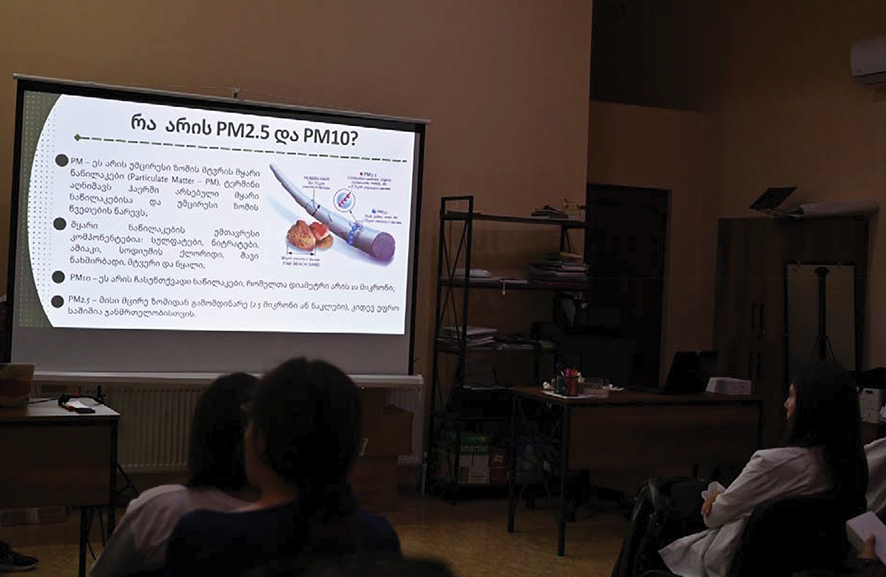
The Plastic Problem
During the Eco Centre training, we also talked about the global and local plastic crisis. Did you know that in Georgia, plastic production has gone up by a crazy 71% in the past 10 years? And that’s mostly because of single-use plastics like bottles and disposable tableware- like Georgians love to use on picnics. They say each person in Georgia uses about 85 plastic bottles a year. Most of this plastic ends up in landfills and can take hundreds, if not thousands, of years to decompose.
Luckily, there are plans in place to tackle this issue. The government says it aims to recycle 50% of plastic by 2025 and 80% by 2030. They’re working on a new program that copies the European Union’s efforts to create a circular economy for plastics. Fingers crossed!
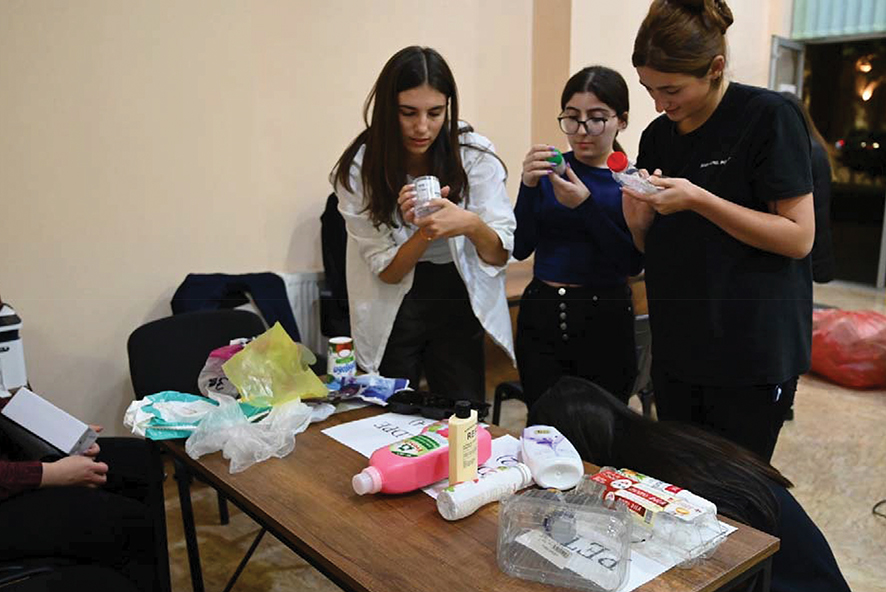
Understanding the Types of Plastic and Their Recyclability
The Eco Centre leaders put us in small teams competing to find the labels on different kinds of plastic waste products. Then they taught us what can and can’t be recycled. Here’s what we learned:
First up was PET, or Polyethylene Terephthalate. You’ll find this plastic in food and drink packaging, like water bottles and containers. It’s highly recyclable, but if you leave liquids in the containers for too long, they can release harmful chemicals, especially when they warm up.
Next is HDPE, or High-Density Polyethylene. This plastic is used for milk containers, detergent bottles, and shopping bags. HDPE is easy to recycle.
LDPE, or Low-Density Polyethylene, is another type of plastic you’ll see in plastic bags, wraps, and some containers. LDPE is tough to recycle.
Then we have PP, or Polypropylene. This plastic is common in hot food containers, straws, and even car parts. PP has “limited recyclability.”
Polystyrene, written as “PS,” is used for disposable cups, food containers, and packaging. However, it has a low recycling rate and can release harmful substances when heated.
There’s also PVC (Polyvinyl Chloride) used in toys, cling wraps, and some medical supplies. Unfortunately, it’s rarely accepted in recycling programs because it can be toxic and harmful to the environment.
Last is the category “Other plastics,” which includes mixed plastics and materials like polycarbonate. Generally, these are not recyclable and may contain hazardous substances like BPA.
So, while PET and HDPE are the most commonly recycled plastics, many others aren’t as easy to recycle. It’s important to remember that all plastics can release harmful substances under extreme conditions, like high heat. By understanding these different types of plastic and their recyclability, we can make smarter decisions in our daily lives. Always check the recycling symbols, and let’s try to reduce plastic use whenever we can.
Making a Difference
During our training, we discussed how each of us plays a role in creating a better environment. Whether it’s reducing plastic use, recycling, or simply being more mindful about our choices, as every action counts!
At the end of the session, we all received digital certificates to recognize our participation. It really felt great to be a part of something so important, even though the task ahead of us is huge!
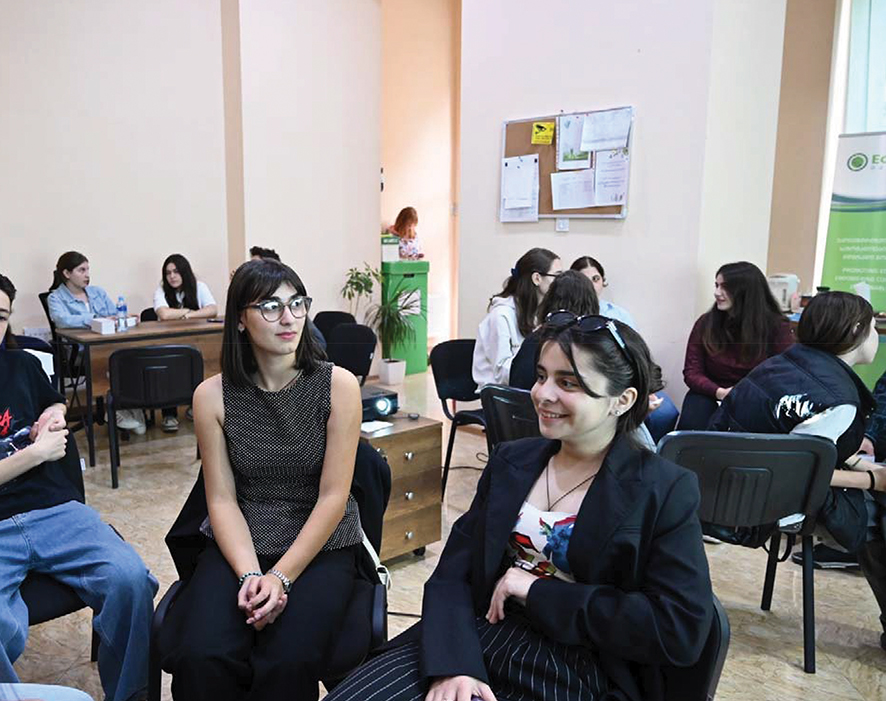
Thank You to the Organizers
I want to give a huge shout-out to everyone who participated and made this training a success, especially the Eco Centre trainers, who, even while we were sitting there learning, had local people from Rustavi coming in with big bags of plastic and paper for them to recycle. And also a special thanks to the Ministry of Foreign Affairs of Estonia for supporting this training program.
Let’s keep working together to create a greener future and make eco-friendly choices every day!
***
Did you know…?
1. More than 8 million Tons of Plastic Enter the Ocean Every Year
We generate more than 380 million tons of plastic waste each year, and 8 million tons of it end up in the ocean. That’s the same amount as the weight of two million elephants combined.
2. 3 billion People in the World Regularly Eat Fish
About half of the world’s population eats fish regularly. When fish eat plastic waste, we are also eating food that is contaminated. We still don’t know exactly how consuming plastic can harm our bodies.
3. Marine Animals Accidentally Eat Plastic Waste
Plastic waste floating in the water can look a lot like food to marine animals. 33% of fishes were found to have consumed plastic, which is chemical and toxic, and poses threats to their health or even kills them.
4. Plastic Waste Traps Animals
Plastic waste can trap animals easily. Unlike us, they don’t have hands to untangle themselves from fishing nets or plastic packaging rings, which prevents them from eating, moving, or growing right, and can even cause them to die.
5. Plastic Breaks Down into Microplastics
When plastic decomposes, it breaks down into smaller pieces called microplastics. Although we can easily pick up plastic waste littered on coastlines to reduce pollution, it’s almost impossible to get rid of microplastics as they are so tiny that they cannot be seen by the human eye. And yet, despite their size, they are just as harmful as other plastics.
6. Ocean Plastic Pollution Will Triple by 2040
It is said that ocean plastic pollution will triple by 2040 if we keep producing plastic at the current rate. However, if we take action to reduce plastic litter and start investing in new, more sustainable solutions, the amount could be cut by 80%!
7. Plastic Waste Will Never Go Away
While plastic will eventually disappear, the decomposition process takes nearly 450 years! That is why we have to take action now and stop polluting our environment and especially our oceans.
Blog by Lily Davies-Dolaberidze


